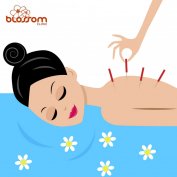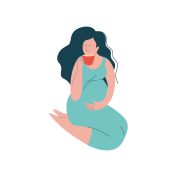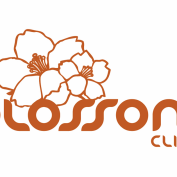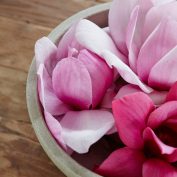Indigenous to the Mediterranean countries and Asia, Chaste Tree Berry has been renown as both an aphrodisiac and an anaphodisiac. It was known in the middle ages as Monk’s pepper because of its reputed ability to suppress sexual desire in celibate monks. Now in the 20th century it is being touted as the natural female “Viagra”. Chaste Tree Berry’s effects lie in its ability to stimulate and regulate anterior pituitary functions. In particular, it can normalize the amount of progesterone in our bodies. German research has discovered that Vitex does this by stimulating the production of luteinizing hormone (LH). Luteinizing hormone is produced in the pituitary and it is what signals the female body to release an egg. Once the egg is released it is the empty follicle called the corpus lutetium that is responsible for manufacturing female’s monthly surges of progesterone.
Recent findings confirm that Chaste tree berry can restore normal estrogen to progesterone balance. Chaste tree berry has been successfully used to regulate irregular menses and PMS symptoms including dysmenorrhoea, fibroid cysts, and hormonal constipation. It can be used to stabilize the cycle after withdrawal from progesterone birth control pills. For women trying to get pregnant, or who are experiencing amenorrhea or PCOS, it can help regulate the ovulatory cycle. It is reported to be safe to take after the third month of pregnancy but not recommended, because it may bring on milk flow too early. After the birth however, it may again be taken to stabilize the hormones and increase lactation. Research as shown it to be most effective taken the first ten days after birth.
In England and increasingly in the United States, Chaste tree berry is being used to relieve the symptoms of menopause. Both PMS and menopause symptoms are commonly caused by estrogen dominance and can benefit from the use of Chaste tree berry. For practitioners of Chinese medicine, Peter Holmes categorizes Chaste tree berry as entering the Liver, Spleen and in particular regulating the Chong and Ren pathways. (Traditional Chinese Medicine uses a similar herb Man Jing Zi, or Vitex Rotoundifolia. Both species are from the same family, verbenaceae, but have been used differently. Man Jing Zi is used to relieve wind heat, and clear heat from the liver. It is used for headaches and eye pain or in combination with other herbs for Wind heat colds.)
Clinical research shows that Chaste tree berry may work in as fast as ten days, but for lasting and full benefit one should take it for 6 months to a year at a time. With PMS, positive results may be seen by the 2nd cycle but permanent improvement may take up to a year. Vitex has no reports of side effects and can be taken as an infusion, tablet or tincture. Dosage would be one half to one gram dried berries infused for 10-15 minutes or 1-2 ml of tincture three times a day. For pills, we usually recommend 800 mg per day.
References:
*Breezing Through the Change, Managing Menopause Naturally by Ellen Brown and Lynne Walker Frog Ltd, Berkeley, California 1994
*Botanical Influences of Illness, a sourcebook of clinical research, Melvyn Werbach, M.D., and Michael Murray, N.D. Third Line Press, California 1994
*Chinese Herbal Medicine Materia Medica, Dan Bensky & Andrew Gamble, Eastland Press, Washington 1986
*The Dictionary of Modern Herbalism, Simon Y Mills M.A., M.N.I.M.H. Healing Arts Press, Vermont 1988
*The Energetic of Western Herbs Vol. II, Peter Holmes, Artemis, Colorado 1989
*Health World Online, http://www.healthy.net/library/books/hoffman/materiamedica/chaste.htm
*What Your Doctor May Not Tell You About Perimenopause, John R. Lee M.D., Jesse Hanley, M.D., and Virginia Hopkins Warner
Contributed by Rylen Feeney, Independent Practitioner at Blossom Clinic, Portland, Oregon










